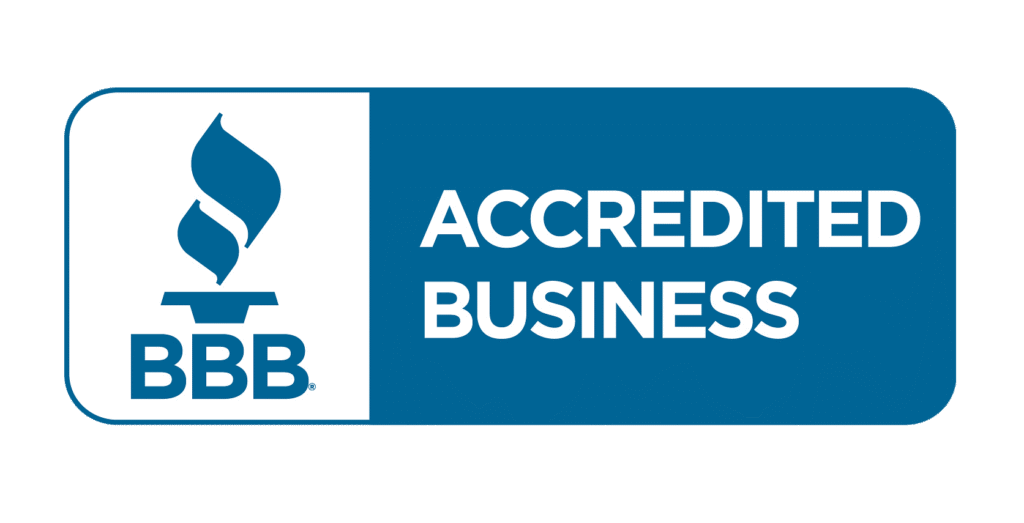Basement Flooding Pickering
Pickering Basement Flooding Services
Your Pickering basement can develop mold in just three days after flooding. This creates serious health risks that put your family at risk. The situation gets harder because of seasonal rain and temperature changes. These factors stress the foundations and allow water to seep in.
Dealing with a flooded basement? You’re not alone. Many local homeowners face similar challenges. The cost of restoration can vary widely depending on the severity of the damage and the solutions required.
Exterior waterproofing is generally more expensive than interior methods, but both are essential investments in protecting your home. While the costs may seem high, protecting your basement is important. It keeps your property safe, strong, and valuable over time.
This piece covers everything about emergency basement flooding in Pickering. You will learn why Pickering water damage happens.
You will get affordable solutions from local experts. You will see detailed costs. You will read success stories from neighbours who fixed their water damage problems.

Contact Us Today
Homeowners Report Rising Basement Flooding in Pickering
Pickering homeowners face a growing crisis as basement flooding reports continue to rise. The Ontario government says flooding is “the most significant natural hazard in Ontario for death, damage, and disruption.” More properties now deal with water damage than ever before.
Recent weather patterns increase flood risk
The city’s location makes it easy for floods to happen. Pickering is next to Lake Ontario.
It has many creeks and rivers. This creates several ways for water to enter homes. Unpredictable weather patterns have made this natural risk even worse.
Different seasons bring unique flooding risks to the Pickering basements apartment. Winter creates dangerous conditions when rising water levels or sudden thaws break ice into large, jagged chunks. These pieces stick behind culverts and crossings, block proper drainage, and put more pressure on residential areas.
Snow melts faster as temperatures rise in spring, which raises water levels. Summer brings quick, intense thunderstorms that overwhelm smaller creeks and drains.
Fall might be the riskiest season. Severe storm systems, including leftover tropical storms, can dump rain for days. When this heavy rain falls on wet ground, rivers rise fast.
These seasonal effects have gotten worse. Flash floods happen more often now, especially in urban areas like the Lower Carruthers cluster. Local infrastructure can’t handle the water volume during bad weather.
The Toronto and Region Conservation Authority works with the Ontario Ministry of Natural Resources to warn about possible floods. They run this Flood Forecasting and Warning Program all year to give cities early warnings about flooding.
Pickering neighbourhoods are most affected by water damage
Some Pickering areas get hit harder by basement flooding than others. Pickering Beach, which started as a summer resort in the 1920s, has grown into a residential area. The Lower Carruthers flood cluster faces significant risks now.
Many homeowners tell similar stories about flooded basements. Water damage gets worse and more expensive the longer it stays. Hidden moisture creates mold, weakens buildings, and can make people sick.
Pickering’s city government handles stormwater using ditches, culverts, catch basins, storm sewers, and ponds. These systems help direct water to local creeks and Lake Ontario. Yet these systems get overwhelmed during storms, leaving homeowners with huge cleanup bills.
Homeowners need to know their flood risk to protect their properties. The weather keeps testing the city’s infrastructure, so people must take steps to keep their basements dry.
Common Causes of Flooding in Basements Pickering
Local water damage specialists have documented the main causes of basement flooding that Pickering residents face. Learning about these problems is essential to protect your home’s foundation and contents.
Foundation cracks and poor drainage
Foundation cracks are the most common ways water enters basements. Water can get through any opening in a foundation. This includes cracks in walls and floors, gaps around pipes, and spaces near windows or cold joints. These cracks usually fall into three types:
- Shrinkage cracks appear when poured concrete foundations cure and contract naturally, which creates potential leaks
- Bulging cracks form when wet soil outside pushes against foundation walls
- Settlement cracks happen when foundation footings sink unevenly into the surrounding soil
“When water leaks through your basement walls or floors, it can quickly lead to flooding and damage to personal belongings”. Concrete needs proper moisture barriers because it’s not naturally waterproof.
Blocked weeping tiles and sump pump failure
Weeping tile systems are vital for a basement flooding protection program. These permeable pipes lie underground around foundation perimeters and collect groundwater to direct it away from homes. The systems often face problems.
Soil, rocks, and debris can block weeping tiles by entering through weep holes. Plant roots and burrowing animals might damage pipes, which lets more blockages build up. Blocked pipes prevent proper drainage and create pressure against foundation walls.
Sump pump failures pose another major flooding risk. These devices sit at the lowest points in basements to remove excess water. They can stop working because of:
Power outages during storms, too much water during heavy rainfall, mechanical problems, or poor installation. A broken sump pump during heavy rain leads to faster water buildup and much damage.
Improper lot grading and downspout issues
Houses should sit at high points with yards that slope away. Soil often settles after foundation excavation and creates areas of poor grading near houses. This settlement lets water collect near foundations instead of flowing away.
Downspout placement greatly affects basement flooding Pickering risk. A single one-inch rainfall dumps about 600 gallons of water on an average home’s roof. Downspouts that release water close to foundation walls create serious flooding risks.
Clogged gutters and badly placed downspouts let water build up around foundations, leak through cracks, and flood basements. Experts suggest extending downspouts at least 6-10 feet from foundations to guide water away properly.
Pickering homeowners can take preventive steps by understanding these common causes. This knowledge helps save thousands in restoration costs and protects valuable belongings from water damage.
Waterproofing Companies Offer Solutions for Flooded Basements Pickering
A flooded basement in Pickering needs professional waterproofing companies to restore your space and stop future water damage. These experts customize their solutions based on your home’s needs and budget.
Interior vs exterior waterproofing explained
Pickering’s professional waterproofing companies use two main approaches to manage basement water. Interior waterproofing handles water that has already seeped in, while exterior waterproofing stops water from getting inside your basement.
Exterior waterproofing involves excavating around your foundation to install waterproof membranes and drainage systems. This proactive approach addresses the root cause by keeping water away from your foundation walls. While it typically requires a larger investment, it offers long-term protection against structural water damage.
Interior waterproofing, on the other hand, manages water after it enters your basement. A good solution for properties where digging outside isn’t possible exists. This can be because of limited space, nearby buildings, or landscaping.
This method helps move water away from your home safely. It can be a good choice in many situations.
Sump pump installation and maintenance
Sump pumps are the life-blood of many Pickering basement waterproofing systems. These devices collect groundwater and pump it away from your foundation.
You can choose between two main sump pump types:
- Submersible pumps work underwater in the sump pit and last 5-10 years
- Pedestal pumps sit above the sump pit and can work well for up to 25 years
Experts suggest yearly maintenance checks and extra inspections after severe storms. Many Pickering homeowners choose battery backup systems that keep working during power outages – which often happen during floods.
Toronto’s Basement Flooding Protection Subsidy Program helps homeowners. They can receive up to CAD 3,622.74 for approved sump pump installations. These pumps must have battery backup systems.
French drains and backwater valves
French drains manage water effectively by collecting and moving groundwater before it floods your basement. Interior systems like WaterGuard need less disruption than exterior French drains that require extensive digging.
These drainage systems collect water where it usually comes in. This is between your basement floor and wall. They then send the water to a sump pump.
Modern systems put drainage pipes in the “clear water zone” above the footing. This is different from traditional French drains, which are in the “mud zone.” This change helps prevent clogging.
Backwater valves protect against sewer backups – the worst kind of basement flooding. These devices on your main sewer line stop contaminated water from flowing back during municipal sewer overloads. Yearly professional maintenance keeps these valves working properly to protect your basement from sewage backups.
Professional waterproofing experts can help you choose the best solutions for your basement flooding problems in Pickering.
How Much Does Basement Flooding Restoration Cost in Pickering?
Basement flood restoration in Pickering can get pricey, and costs change based on many factors. Homeowners need to know these costs to prepare for water damage emergencies.
Cost breakdown by service type
Basement flood remediation costs can vary significantly depending on the extent of the damage and the services required. The process often begins with water extraction, followed by professional drying using industrial-grade dehumidifiers. If mold is present, remediation will be necessary, and sewage backups typically require more intensive—and costly—cleanup efforts.
Material replacement, such as drywall and flooring, can also impact the overall budget. In Pickering, exterior basement waterproofing is a common way to stop future flooding. The total cost of this project can be high. It depends on the home’s layout and the size of the foundation.
Factors that influence pricing
Restoration costs depend on several key factors. Cleaning up clean water is generally less expensive than dealing with contaminated or sewage-filled water. The damage level, how long the water has been there, and the materials affected all affect the final cost.
Basements with high-end finishes usually cost more to restore than those with bare concrete. Waiting too long to clean up can greatly increase both the damage and the cost. Acting quickly is essential to minimize long-term restoration efforts.
Available rebates and financing options
Pickering residents have access to several financial assistance programs to help reduce the risk of basement flooding. The Basement Flooding Protection Subsidy Program gives money back for installing flood prevention devices. This includes backwater valves, sump pumps, and pipe severance. Homeowners can receive a significant portion of eligible costs through this program.
Additionally, Durham Region provides a special loan program to help cover the installation of backwater valves or sump pumps. Your home insurance policy may cover some or all the restoration costs. This depends on the cause of the flooding. Reviewing your policy details and exploring all available support options is important.
Protecting Your Pickering Home From Future Flooding
Basement flooding Pickering is definitely one of the most stressful problems Pickering homeowners face. In this piece, we got into how seasonal weather patterns and geographical factors make our community vulnerable to flooding. Water intrusion mainly happens because of failing sump pumps, foundation cracks, improper drainage, and blocked weeping tiles.
Budget-friendly waterproofing solutions protect homes against these threats. Homeowners usually choose between two options. They can use interior systems that manage water after it enters. Or, they can use exterior methods that stop water from reaching the foundation.
Sump pumps with battery backups protect homes during storms when power often goes out. Having French drains and backwater valves is helpful. They create strong defenses against groundwater and sewer backups.
Money plays a major role when dealing with basement flooding. Restoration costs can vary widely depending on the type of water involved and the extent of the damage. The longer water remains, the more severe—and costly—the damage becomes.
Our neighbour’s real-life experiences show the value of professional restoration services. Positive testimonials consistently mention quick response times, detailed solutions, and clear communication. Before-and-after case studies show amazing transformations from damaged spaces to fully restored basements.
When it comes to basement flooding, prevention is unquestionably better than cure. Homeowners should not wait for damage to happen. They should talk to waterproofing experts. These professionals can find and fix their home’s specific weaknesses.
Experts say that flood repairs can be very expensive. This makes prevention a smarter and cheaper long-term choice.
Note that basement flooding in Pickering affects thousands of residents each year. You’re not alone in this challenge. Local experts, government assistance programs, and experienced neighbours are all part of our community’s response to this ongoing issue.
Basement flooding Pickering can threaten our homes. Good preparation is important. Quick help from professionals can also make a difference. This can keep our homes dry and safe, regardless of the weather.
If you discover water in your basement, who to call becomes your first urgent question—always reach out to a professional water damage restoration company. They can assess the situation quickly and begin cleanup before further damage occurs.
To avoid future problems, it’s crucial to learn how to prevent basement flooding Pickering by installing proper drainage systems, maintaining your sump pump, and sealing foundation cracks. Prevention not only protects your home but also saves you from costly repairs down the road.
FAQs for Basement Flooding in Pickering
Q1. How quickly should I address water in my basement?
You should address the water in your basement immediately. Standing water can cause significant damage to your foundation, wooden structures, and lead to mold growth within days. The longer water remains, the more extensive and costly the damage becomes.
Q2. What’s the typical duration for drying out a flooded basement?
Drying out a flooded basement can take anywhere from a few days to several weeks, depending on the extent of the water damage. Crucial to ensure thorough drying before attempting any repairs or refinishing to prevent future issues.
Q3. Are basement floods covered by home insurance?
Home insurance typically covers sudden and accidental water damage, such as from a burst pipe. However, coverage can vary depending on the cause of the flood. You should check your specific policy and consult with your insurance provider for details on what it covers.
Q4. Can a dehumidifier effectively dry out a flooded basement?
Yes, a dehumidifier can be effective in drying out a flooded basement. It helps remove excess moisture from the air, reducing humidity levels and preventing mold growth. However, for extensive flooding, professional water extraction and drying services are often necessary.
Q5. What are some common causes of basement flooding in Pickering?
Common causes of basement flooding in Pickering are foundation cracks, poor drainage, and blocked weeping tiles. Other causes include sump pump failures, improper lot grading, and downspout problems. Seasonal weather patterns and the city’s geographical location also contribute to increased flood risks.
How It
Works
Enter Details
Please provide as much information as possible about your emergency service and answer a few questions. Within minutes, we will be able to provide you with an expert. It’s easy and quick!
Book Assessment
Hire Us
It’s crucial to realize that several things influence the ultimate cost when estimating the cost of water damage repair. To restore your property to its pre-damage state, CPR24 Restoration is here to help you at every stage of the procedure. Let’s examine the main factors that affect the cost of water damage restoration in more detail.
- Area
One of the most important elements influencing restoration costs is the extent and size of the water-damaged region. Repair expenses increase with the size of the impacted region, whether it’s a minor leak or widespread flooding. The total cost of water damage restoration rises as larger areas require more work, supplies, and time to repair.
- Location
Due to geographical variations in labour costs, material availability, and situational urgency, geographic location might affect the cost of water damage repair. Because of the expense of living and logistics, properties in urban regions may have greater service fees than those in rural locations.
- What category is the water?
The type of water that caused the damage is crucial. Three criteria are commonly used to classify water damage:
Since Category 1 (Clean Water) uses water from clean sources like burst pipes or dripping faucets, it is the least expensive to clean.
Water from appliances or potentially contaminated sources, such as washing machines, sump pumps, and dishwashers, falls under Category 2 (Grey Water).
Category 3 (Black Water): This type of water, which originates from contaminated sources such as sewage, floodwater, or standing water in basements, is the most dangerous and costly to clean up. The cost is increased by the need for specific cleaning and sanitization for Category 3 water damage.
- Is there any water left?
Before beginning any additional repairs, any remaining water in the impacted areas must be removed. Because specialists need to use specialized equipment, including industrial-grade pumps and dehumidifiers, to extract the water and completely dry out the damaged areas, standing water might result in higher repair expenses. Long-term untreated water can encourage the formation of mold, which may necessitate more remediation and raise repair expenses.
- Other elements are present
The following additional variables could affect the price of restoring water damage:
Structural Damage: The walls, floors, and ceilings must be replaced or restored if water has weakened their structural integrity.
Growth of Mold and Mildew: Mold and mildew can appear if water damage is not addressed for an extended length of time. The overall cost of repair may rise dramatically with professional mold removal.
Materials Affected: If damaged beyond repair, some materials, like insulation, drywall, and hardwood floors, may need to be replaced completely. The cost of repairs increases with the cost of the materials.
Labour Intensity: Labour expenses will be impacted by the intricacy of the repair procedure, which may include demolition, cleaning, drying, and rebuilding.
- Emergency Services
Unexpected water damage can occasionally occur, necessitating prompt emergency water extraction and remediation services. Since emergency services must be provided quickly to stop additional damage, such the growth of mold or long-term structural problems, they are frequently more expensive.
Your property may suffer major repercussions from water damage, including mold growth and structural problems. To help you take preventative action and deal with issues before they become worse, CPR24 Restoration is here to explain the most typical causes of water damage. Let’s examine the main reasons why water damage occurs and how they may affect your house or place of business.
- Severe weather
One of the main sources of water damage is severe weather, such as hurricanes, heavy rain, or snow. Drainage systems can be swiftly overloaded by water, resulting in roof leaks, basement flooding, and even wall and floor damage. Extreme weather-related water damage is especially likely to occur in coastal locations or areas that get high rainfall.
- Clogged gutters
Gutter blockages caused by leaves, mud, and branches make it difficult for them to efficiently redirect water away from your house. This may cause gutters to overflow, allowing water to infiltrate into your property’s foundation and walls. Water seeping into your home from clogged gutters can eventually seriously harm your roof and even the interior of your house.
- Leaking pipes
Leaking or ruptured pipes are among the most frequent and frequently overlooked causes of water damage. Anywhere in your house, including behind walls, in basements, and beneath sinks, leaking pipes might appear. If a little leak is not fixed, it might cause significant water damage. In addition to age, corrosion, and inadequate installation, cold temperatures in the winter are also frequent causes of pipe leaks.
- Washing machine leak
Another common cause of water damage in houses is washing machines. Large volumes of water can pour into your floor from a malfunctioning hose, a worn-out gasket, or an overloaded machine, damaging nearby walls, hardwood floors, and carpets. To stop leaks, it’s critical to routinely check the hoses and connections on your washing machine.
- Condensation from AC
One prevalent yet obscure source of water damage is condensation from air conditioners. Improper drainage of your air conditioner can lead to the buildup of moisture and damage to adjacent walls, ceilings, and floors. This can eventually cause mould and mildew to grow and have a major impact on the air quality in your house. Preventing this problem requires routine cleaning and maintenance of your air conditioning system.
- Blocked drains
Water backup from clogged or blocked drains in sinks, showers, or toilets can harm ceilings and floors. Slow water drainage from blocked drains can cause standing water that could overflow and seep into floors and walls. To stop water buildup and any water damage, it’s critical to routinely remove any blockages in the drain.
- Malfunctioning sprinkler systems
Although automatic sprinkler systems are meant to hydrate your grass, they can cause serious water damage if they don’t work properly. Inadequate water distribution or sprinkler system leaks can cause an excessive amount of moisture to accumulate around your home’s foundation, which can lead to mould growth, wet basements, and foundation fractures. Costly damage to your sprinkler system can be avoided with routine testing and maintenance.
- Leaking water heater
If it starts to leak, your water heater is another typical cause of water damage. The surrounding area may flood due to a leaking water heater, causing damage to the walls and floors. Age, rust, and sediment accumulation can erode the water heater over time, raising the possibility of a leak. Significant damage from a broken water heater can be avoided with quick repairs and routine inspections.
- Roof Leaks
Water infiltration can occur from a roof that is old or broken, particularly during storms or periods of intense precipitation. Water seeping into your attic, walls, and ceilings due to roof leaks can result in mould growth, structural damage, and electrical risks. It’s critical to conduct routine roof inspections and fix any gaps, cracks, or missing shingles before they cause serious water damage.
- Sewer Backup
One of the most expensive and painful types of water damage is a sewage backlog. Basements and lower-level rooms may flood as a result of wastewater flowing back into your house due to clogged or damaged sewer lines. In order to reduce health risks, this kind of water damage is classified as black water (Category 3), which is extremely contaminated and necessitates professional cleanup and remediation.
There’s no denying that water damage can pose a number of serious health risks. If your home has been flooded with filthy water, you should be very concerned. Flood damage water is divided into three categories:
- Category 1: “Clean” water from hygienic sources, such as your home’s plumbing. Although this water has not yet been utilized in your home, it is still fresh and pure.
- Category 2: “Grey” water from outside your home, such as seepage from the earth into your basement and post-use water from home appliances.
- Category 3: Unsanitary sources of “black” water that may contain human or animal waste. This water comprises sewage-contaminated water as well as floodwater from rivers and lakes. This water should be treated as though it were poisonous.
If you’re dealing with Category 3 water, you should take a step back and ask for help right away. This water is potentially hazardous to touch or breathe, and anything it has come into contact with must is disposed of or thoroughly cleaned and sterilized. A skilled water damage restoration business will be able to tell you whether or not your contaminated possessions may be saved.
Floodwaters from outside your home can bring a wide range of germs, poisons, mold, and even fungi, even if they don’t contain raw sewage. If your home was flooded with anything other than clean tap water, your family could be exposed to these contaminants, necessitating sterilization operations.
Mold development is the most well-known threat of water damage. Mold spores might start to grow as soon as 24 hours following water damage. Mold has been linked to a variety of health conditions, ranging from allergy-like symptoms to major respiratory troubles and even neurological damage in some people. Mold isn’t something you want to deal with, so if you suspect mold is forming as a consequence of water damage or water that has been left sitting for more than 24 hours, the best thing you can do is hire a mold remediation company.
These toxins are obviously not things you want to sit around and multiply in your home, so dealing with water damage as soon as possible is critical. Water damage, on the other hand, isn’t just a health hazard in the form of biohazards; it can also undermine your home’s structure and components.
Backups of sewage are a nightmare. We don’t have to tell you that, though. If you’re having one, you probably have only one question on your mind. So, what should I do now? It’s easy to feel helpless in the face of the situation. It’s possible that your basement or living space is flooded. Keep calm, remember that things can be fixed, and continue reading.
If sewage backup is a recurring problem in your home, consult a plumber for a diagnosis and treatment plan. Even if the issue is not on your property, enlisting the help of a plumber can typically expedite the problem’s resolution. A plumber can frequently give evidence that the sewer problem is not on your property.
- Power down to the affected area.
- Stop wasting water.
- Put on your personal protection equipment.
- For insurance purposes, take images or videos of the affected area.
- Any damaged property should be disposed of.
- Using a shop vac, remove any standing wastewater or sewage.
- Bleach solution to mop
- Any wood or organic surfaces should be sprayed with a mold protection solution.
- Make use of a dehumidifier.
Sewage Backup and Flood Prevention
- Inspection of the Plumbing System on an Annual Basis
- Cleaning of Drains
- Installation of a backwater valve
Water damage in your home can be caused by a variety of factors. It could be the result of a plumbing issue, an overflowing bath, or floods caused by inclement weather. Whatever the cause of the damage, it’s critical to be aware of the warning signals and not to dismiss them when you see them. Pretending it isn’t there could result in further harm and troubles for your home and family. Here’s why, if you notice water damage, you shouldn’t disregard it.
- Structural Damage
- Mold and Mildew
- Health Problems
- Bad Smells
- Stains
- Increased Repair Costs
- Electrical Damage
- Water Damage Could Indicate a Bigger Problem
- Your Water Bills Might Be Too High
- It Can Worsen Quicker Than You Think
- Your Home’s Appearance Suffers
- There Could Be a Lot of Unseen Damage
- Your Insurance Could Be Affected
- Flooding Can Cause Foundation Damage
- Fixing Water Damage Prepares You For Future Problems
Water damage requires immediate action. As soon as you notice a leak, flood, or overflow in your commercial and residential property, you should contact an emergency restoration company for water damage removal.
As you await the quick arrival of the IICRC-certified restoration team at CPR24 Restoration, you should turn off any electrical breakers in the affected area, and stay away from hazards.
Any furniture that has been affected or damaged, such as carpet, couches, tables, flooring, and other building materials, should be removed promptly. Dispose of any contaminated materials in a safe manner. This will help minimize the need for mold removal.
Now that the area is clear, it is time to extract the water and dry the affected areas with the appropriate equipment. While a dehumidifier may be accessible to the general public, it may be tough to find pumps and blower fans that are readily available. By contacting CPR24 Restoration promptly, our team will arrive on-site in a timely manner to manage the water damage cleanup process, mold removal if necessary, and even reconstruction.
Secondary water damage is the type of damage that can occur as a result of floods and leaks such as mold and electrical issues. These are a noteworthy issue for property owners, particularly if it isn’t tended to in a timely manner. Secondary water damage can cause the development of mold growth, oxidized metal, decayed wood, and bowing floorboards.
How Does Secondary Water Damage Happen
After water damage occurs in a home, mold growth soon follows. Within two days, the first signs of mold growth can become apparent. If not addressed promptly, mold can spread extensively. Mold spores can cause respiratory problems, allergies, and other health issues for occupants. To remove the mold thoroughly and protect against future growth, homeowners should consult with the mold removal pros at CPR24 Restorations. Our professionals are able to eliminate any existing mold safely and take the necessary steps to prevent further mold from developing. Our assistance ensures that water damage will not lead to larger health concerns down the road.
Oxidized metal is another kind of secondary water damage that can develop. If metal is exposed to moisture for a prolonged time, it will start to rust, weakening the material and potentially causing deterioration. Decayed wood is also a frequent problem that can surface after water damage has struck. It can undermine the integrity of a structure and generate an unsafe condition for occupants.
Warped and uneven floorboards can develop as another consequence of secondary water damage. If water infiltrates between floorboards, it has the potential to distort their shape and cause them to lift, posing stumbling risks and allowing further destruction to take place if not handled without delay.
Protect Your Property with Water Damage Restoration
It’s important to address secondary water damage promptly to prevent further damage and potential health hazards. Homeowners should consult with the professionals at CPR24 Restorations, we can help you identify and address these issues effectively and safely. By taking prompt action, homeowners can minimize the damage and ensure that their homes remain safe and healthy places to live.
24/7 Basement Flooding Pickering
Contact Us Today


Frequently Asked Questions
We Partner With All Insurance Companies







Why Choose Us

Appointments

Fast Service

Experience

Certified Mold Removal & Remediation Company

Workmanship

Approved Pricing
Contact Us Now
What Our Clients Are Saying
Trustindex verifies that the original source of the review is Google. We consider ourselves fortunate to have happened upon CPR24 Restoration via a Google search when we were in need of remediation work for a mold issue in our basement. The glowing reviews prompted us to call and we quickly became aware of why this company has met with so much success. As soon as Chris arrived we could see his mind turn to problem-solving mode. He assessed our situation, outlined the work that needed to be done and most importantly provided reassurances that his team could get right on it. It gave us peace of mind to know that CPR24 could not only deal with the mold issue but also put everything back together and refresh all the areas involved. Not having to go in search of renovation contractors was particularly important to us as we had time constraints to get the work done. We were impressed by the efficiency of the trades and the respect shown to us and our home by all the workers involved. And it was nice to see some of the same faces throughout the project which provided continuity for us. It was evident that these individuals took pride in their work and were committed to a job well done. We thank CPR24 for its professionalism and timely service and certainly recommend it for your restoration needs.Trustindex verifies that the original source of the review is Google. I had a flood in my basement and I called right away to get help. The team was extremely professional and efficient. They were with me every step of the way, and answered all the questions that I had. This is by far one of the most professional companies I have ever had the pleasure of dealing with. I would recommend them to everyone that I know because they really care about their work and they treat the customer with the upmost importance and respectTrustindex verifies that the original source of the review is Google. Outstanding service from CPR Restoration! They were fast, professional, and took care of everything with great attention to detail. Highly recommend for any restoration needs.Trustindex verifies that the original source of the review is Google. Recently found mold in my attic, called CPR24 Restoration after finding them on the first page of Google. They picked up the phone straight away and gave me a whole detailed rundown on the steps that would need to be taken in my attic. They were very professional and efficient throughout the entire process. Overall excellent mold removal and remediation company with quick and professional service. Beyond satisfied with the results! Will be recommending to my friends&family.Trustindex verifies that the original source of the review is Google. I called CPR24 Restoration after a condo water leak I recently experienced. After searching flood companies on Google and countless calls with other companies, CPR24 Restoration was the one that stood out to me most and was honestly most helpful throughout the entire process. Chris was quick to answer the phone, and they were the only company that gave me a clear outline of the water damage and flooding process. He met with me the same day of my phone call and was always very punctual. The team was very patient with me, they helped answer all of my many questions and were always very quick to respond if I had any issues throughout the week. I really appreciated how supportive Chris and his team were throughout the entire process. Highly recommend CPR24 Restoration!Trustindex verifies that the original source of the review is Google. I had an amazing experience with CPR24 Restoration. I had mold in my basement and they were very quick and easy. Great customer service, Highly recommend.Trustindex verifies that the original source of the review is Google. My sister recommended CPR24 Restoration for flood damage and mold removal. I started to smell mold in my basement last week, I called Chris and he was there within the hour. I am so relieved I called him when I did because there were signs of toxic black mold which their team removed very efficiently. Staff was friendly and very punctual. Overall 10/10 experience!Trustindex verifies that the original source of the review is Google. Recently I had mold problem in my basement Chris from CPR Restoration came with his professional team and took care of the situation I recommended them to all my friends great company to callTrustindex verifies that the original source of the review is Google. I want to share my wonderful experience with CPR24 Restoration whom I highly recommend to others looking for mold removal companies. I called CPR24 Restoration for the toxic black mold I had in my basement, after finding them on Google. They were always on time, responded quick to my emails, and made me feel very secure throughout the whole process. Their team was very efficient but extremely careful at the same time. So professional and will definitely be keeping their contact for the future.Trustindex verifies that the original source of the review is Google. I was so stressed out though, but Chris and his team are well organised, skilled, well mannered and very friendly. Anytime I called him, he replied. His main focus on client’s satisfaction. He is a very sincere person. Thanks very much to CPR24.







